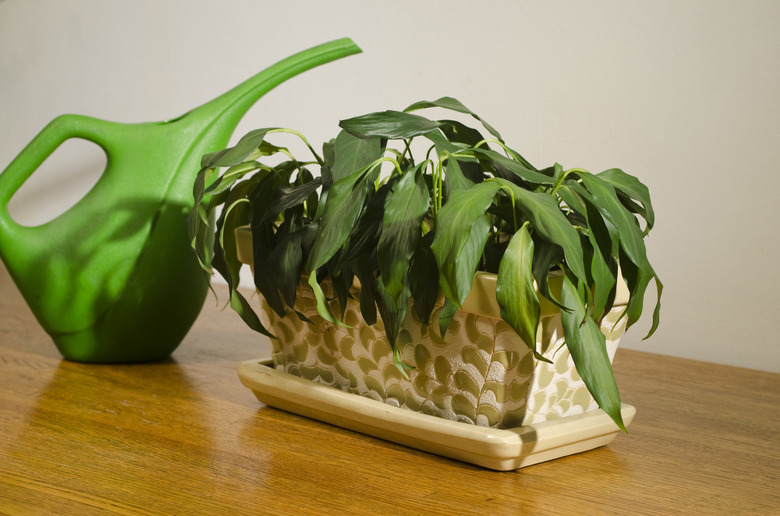Why Are My Plants Droopy?
We may receive a commission on purchases made from links.
Whether or not you talk to your plants, they can't talk back, but they can give you signs that something isn't right. Drooping or wilting is one sign that something needs to change about your care for indoor plants or outdoor plants. Knowing the common causes of drooping can make it easier to correct the situation.
Incorrect Watering Amounts
Incorrect Watering Amounts
All plants need moisture to survive, but the amount of water each plant needs varies. Research the variety of plant you have and determine its specific watering needs. Most plants do best when the soil dries out somewhat between waterings. You should never let a plant sit in waterlogged soil, as it can cause root rot.
Drooping can mean you're giving it either too much or too little water. When you overwater your plant, the leaves often look yellow and droopy because they have excess water. They might also feel softer than normal. If your plant isn't getting enough water, the leaves can also droop. A lack of water doesn't usually cause the leaves to turn yellow, but they might seem dried out.
Improper Light Levels
Improper Light Levels
Plants also vary in the amount and type of sunlight they need. Some prefer direct sunlight, while others grow best in bright, indirect light. Some outdoor plants grow best in areas with dappled sunlight. A plant that receives the incorrect type or amount of sunlight can droop.
Research the type of sunlight your plant needs and adjust its location to give it that type and amount of sunlight. When changing locations, make a gradual shift, especially if you're going from a dark spot to bright sunlight in order to reduce stress.
Rootbound Potted Plants
Rootbound Potted Plants
Potted plants need the proper pot size to thrive. A pot that's too large can hold too much water in the soil and take too long to dry out, which can cause rotting and disease. A pot that's too small can cramp the roots, which slows growth and causes a lack of soil nutrients.
A potted plant can outgrow its current pot. If it becomes rootbound, the houseplant might start to droop and look limp due to not getting enough nutrients and water. Repotting the plant into a slightly larger flower pot can remedy this situation.
Poor Environmental Conditions
Poor Environmental Conditions
Most houseplants like warm, consistent temperatures, although the ideal temperature range can vary with different types of plants. Plants placed near a heat vent might get too warm and droop. Other plants might get chilly if they're near a drafty spot. Find a spot with a consistently warm temperature.
You might also need to add moisture for some houseplants. For example, ferns love moisture. You can do this with a pebble tray with water under the plant, a humidifier, or occasional misting with water.
Houseplant Pest Infestations
Houseplant Pest Infestations
Many pests can weaken or damage the plant, causing it to droop. Some pests suck the sap from your plants, which contributes to drooping. Common pests that affect houseplants include spider mites, aphids, scale, whiteflies, and fungus gnats. They're often very tiny, but you can usually see them upon close inspection, especially if you have a major infestation.
Separate an infested houseplant from others to prevent the pests from spreading. If it's a sturdy houseplant, take it outside and give it a good spray with the hose to remove the pests. You can also apply insecticidal soap to the plant until the infestation clears.
Afternoon Wilt in Outdoor Plants
Afternoon Wilt in Outdoor Plants
Some outdoor plants, especially those with larger leaves, droop in the afternoon on hot, sunny days. They do this to reduce the leaf surface area with less exposure to the sun to help slow down water loss. If outdoor plants droop in the hot afternoon sun but perk up at other times of the day, you likely don't have a problem. Avoid watering plants more in this situation as you could end up overwatering them, and afternoon watering can increase the chances of some diseases due to water remaining on the leaves.
